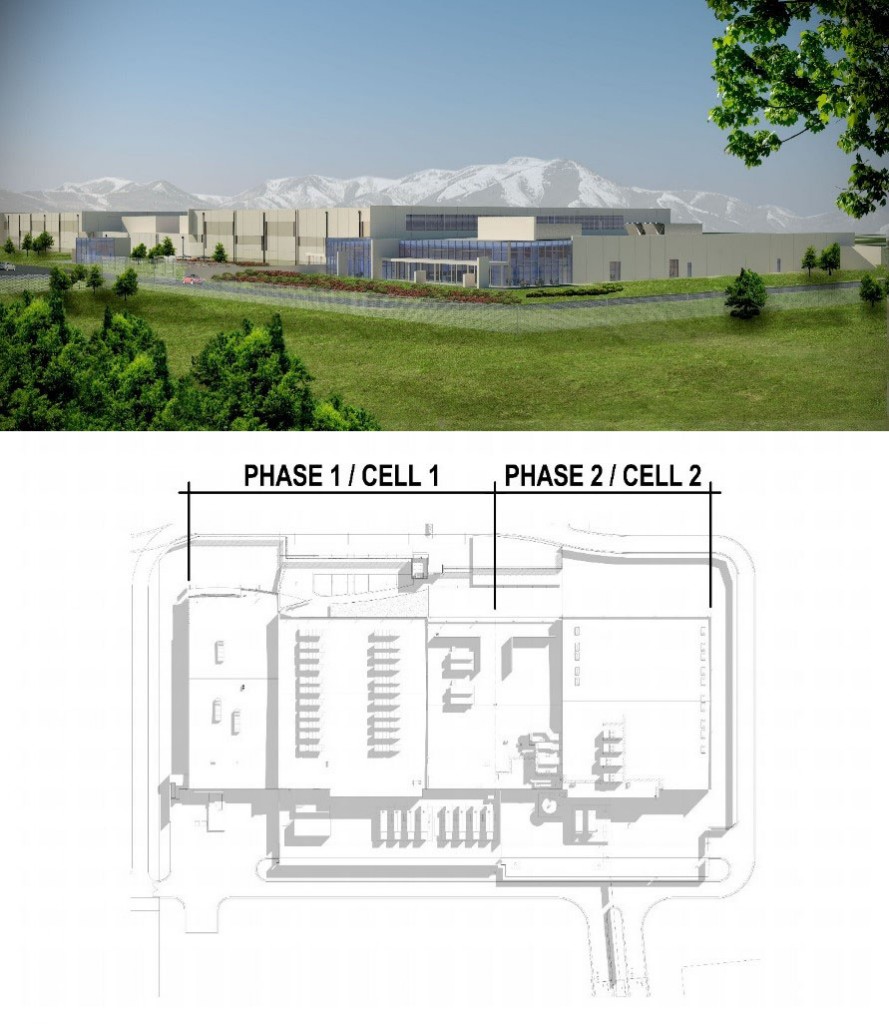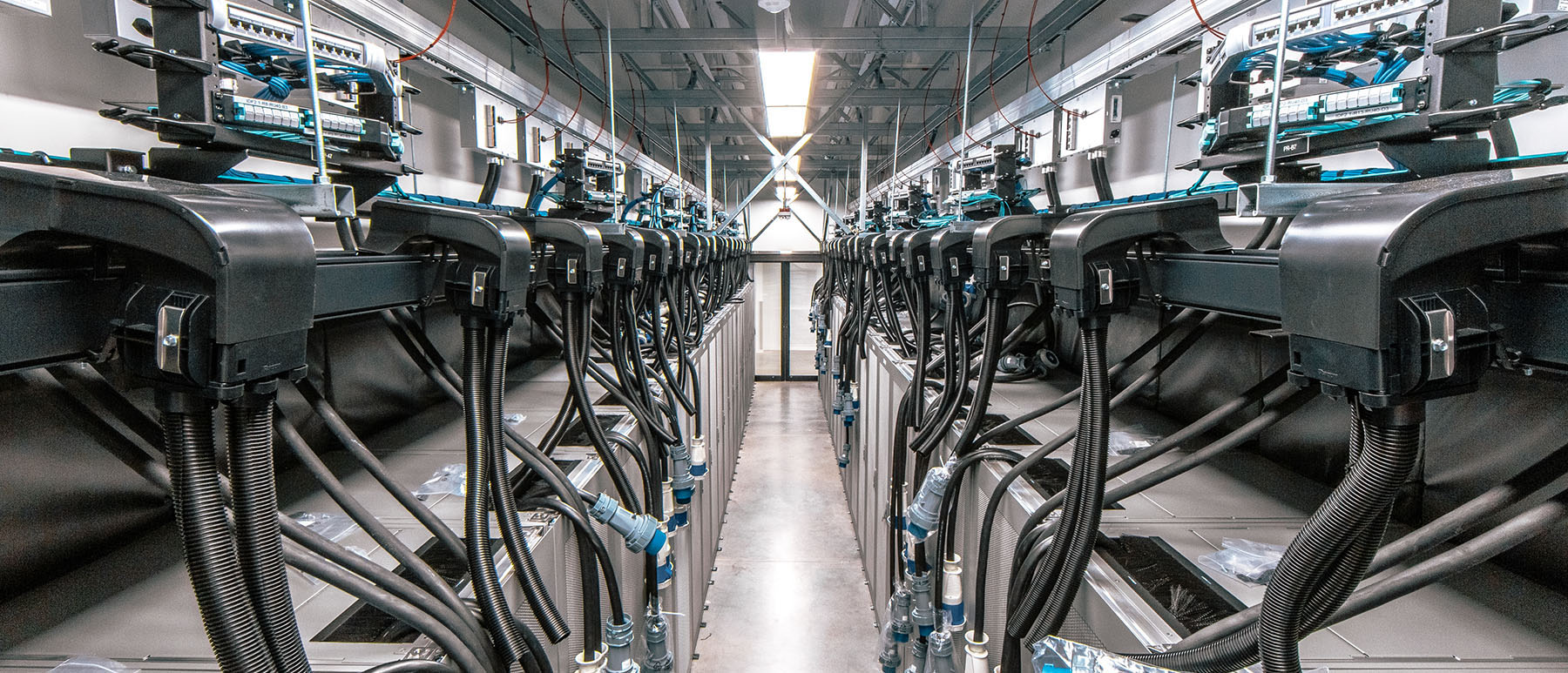With 2014 revenues at $38 billion and more than 130,000 employees company-wide, Oracle has plans. Big plans. These included reaching their internal IT growth targets for 2014 with a forward-looking plan to support IT growth needs for the next several years. Accordingly, Oracle moved forward with the build-out of the UCF Phase 2 Data Center space in West Jordan, Utah. The Glumac-lead design team master planned the UCF Phase 2 space to provide for 30,000 sf of highly reliable and highly available Tier III space. The UCF Phase 2 master plan included building the 30,000 sf of data center space in six modular 5,000 sf builds.
Headquartered in Redwood Shores, California, Oracle is an American multi-national computer technology corporation most known for its comprehensive and fully integrated stack of cloud applications, platform services and engineered systems. Perhaps less known, but equally impressive, is its commitment to sustainability practices that are embedded in every aspect of its business operations, making Oracle a sustainability leader in the high-tech industry.
With more than two decades of experience implementing sustainable energy, water and waste management practices, Oracle has set some high sustainability goals for themselves. By 2016, Oracle targets a 10% reduction in energy use per employee and 6% improvement in Power Usage Effectiveness (PUE) in production data centers. The Oracle Utah Compute Facility Cell 2.1 in West Jordan, Utah, is one part of this pursuit.

UCF Phase 2 was originally planned as a 1,100-rack data center with the entire space populated in a single build. Oracle modified their Phase 2 plans to incorporate a phased build approach that provides for six 5,500 sf rack “Cells” to fit within the existing UCF Phase 2 shell space. Modular data center designs enable a “pay as you grow” path forward. Modular builds also allow for clients to more effectively meet their evolving IT user requirements with the newest technology improvements as well as allowing the owner to take advantage of the newest technologies available to the supporting MEP designs.
This Design-Collaboration approach used on the UCF Phase 2 project heavily emphasized open collaboration between Oracle, the Glumac-led design team and the Holder Construction-led construction team. Early face-to-face strategy sessions led to a strong Basis of Design and established open project communications, a strong sense of partnering and the critical project goals. Weekly project collaboration calls and monthly on-site meetings kept the project on track.
The project’s Design-Collaboration approach was highly successful. Some of the key Oracle project metrics like optimized project cost, low PUE, ease of installation and maintenance were successfully addressed through the Design-Collaboration approach. The open project leadership created a safe, constructive environment that encouraged free flow of ideas leading to the most optimized project cost, low total cost of ownership (TCO), and industry leading energy efficiency. The owner, design, and construction teams coordinated solutions through an always current Revit BIM Model.

The results were clear. The Oracle UCF Cell 2.1 Phase 2 project was completed on time, meeting the user’s requirements and costs were on budget. The PUE of the space was calculated to be 1.22, which is a 24% reduction as compared with Utah industry averages of 1.60.
| Critical IT Load |
PUE | Yearly kWhr Utilized |
Notes | |
| Oracle UCF, Phase 1 | Critical IT Load5.8 MW |
PUE 1.29 | Yearly kWhr Utilized ~65,500,000 |
Notes
UCF Phase 1 was designed for 7.2 MW. Critical load and PUE
represented measured values as of 1/1/15
|
| Oracle UCF, Phase 2 Cell 2.1 | Critical IT Load 1.2 MW |
PUE 1.22 | Yearly kWhr Utilized ~10,850,000 |
Notes Calculated PUE |
| Utah Energy Code | Critical IT Load 1.2 MW |
PUE 1.6 | Yearly kWhr Utilized ~15,500,000 |
Notes Calculated PUE |
Further, the low PUE will help Oracle’s original sustainability goals of achieving 6% reduction in data center PUE and will save $250k/year compared to a similar facility built to Utah energy code standards.
The Oracle Utah Compute Facility Cell 2.1 demonstrates that data centers can be both sustainable and reliable. Taking a Design-Collaboration approach to modular pay-as-you-go growth and practicing consistent, open communication and collaboration brought the project to completion very successfully. Ultimately, the key element of project success started from the top. It was Oracle’s commitment to sustainability that set the bar for the project. In making these goals a priority, Oracle selected an expert design and construction team that shared the same vision.
To learn more about similar mission critical and sustainability-related projects, please email us at contactus@glumac.com.

